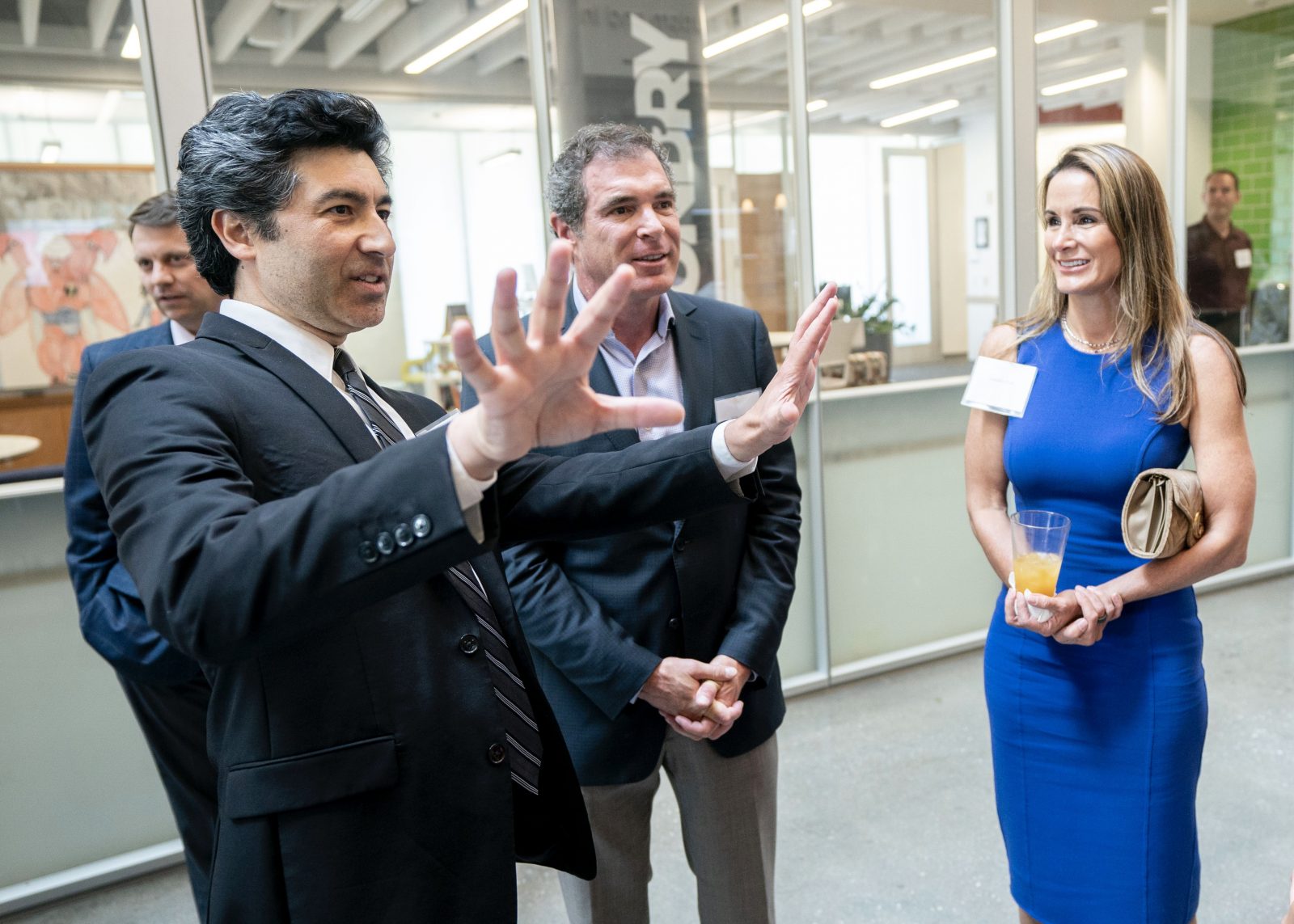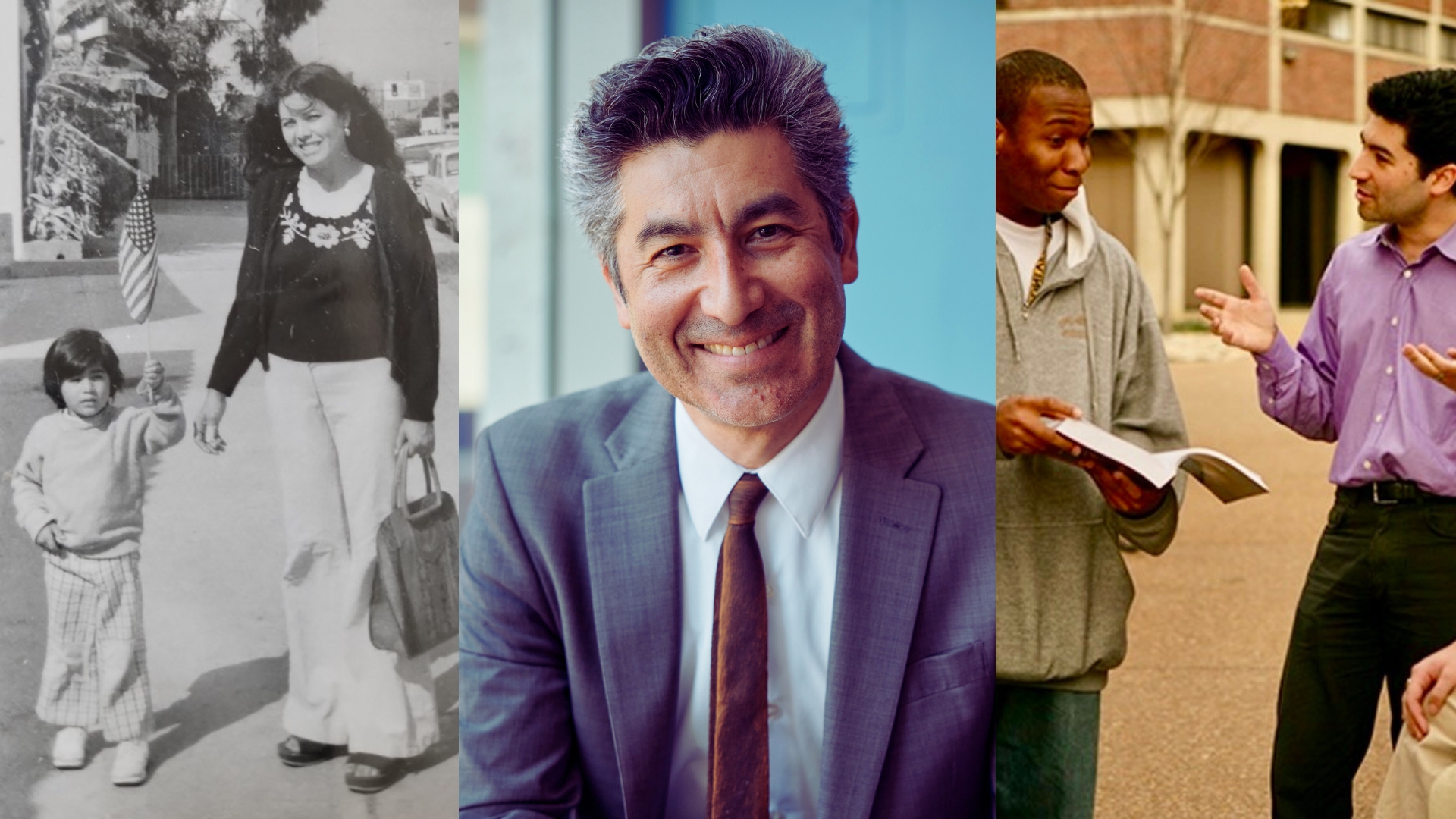Vanderbilt University has been at the forefront of autism research for 60 years. Its groundbreaking studies span disciplines from medicine and neuroscience to education and engineering. Today this legacy of discovery is thriving as people with autism emerge as vital contributors to research and scholarship—a transformation led by astrophysicist Keivan Stassun.

Stassun’s pioneering work in recognizing and harnessing the unique abilities of people with autism has infused new talent and perspectives across the university and earned him a National Medal of Science and a MacArthur fellowship for 2024.
At Vanderbilt, people with autism aren’t only research subjects—they are key drivers of scientific discovery. Vanderbilt’s autism research centers and academic programs, using Stassun’s approach, have fostered a collaborative ecosystem where neurodiverse scholars and scientists can thrive and bring their unique perspectives and abilities to bear on complex research challenges. Not only are these innovators making important contributions to research and discovery, but their advocacy is also changing attitudes and removing systemic barriers for people with autism.
AUTISM RESEARCH: 1960s TO TODAY
The Vanderbilt Kennedy Center, founded in 1965, is one of the oldest research centers in the country dedicated to advancing the diagnosis, prevention, treatment and amelioration of intellectual and developmental disabilities. It provides services for neurodiverse people and their families and offers training for industry professionals. It also provides intensive support and other services like data analysis for clinical and translational research.
In 2018 Billy and Jennifer Frist, BS’93, gave autism research another boost when they donated $10 million and—working with Stassun—established the Frist Center for Autism and Innovation at the Vanderbilt University School of Engineering. The provost’s office also provided a Trans-Institutional Programs pilot grant to get started. The center is focused on the future, aiming to unlock and amplify the unique talents of neurodiverse individuals by reimagining how their distinctive capabilities can drive innovation and excellence in academic research and industry.

As center director, Stassun leads cross-disciplinary research and advocacy that involves the School of Engineering, the College of Arts and Science and the Owen Graduate School of Management. Nilanjan Sarkar, Tim Vogus, Dr. Jim Bodfish and autism self-advocate Dave Caudel provide additional leadership, and they work together to award several Neurodiversity-Inspired Science and Engineering Fellowships for graduate student research each year. Sarkar is senior associate dean of the School of Engineering. Vogus is an Owen professor. Bodfish is a professor of hearing and speech sciences. Caudel is associate director of the Frist Center.
Neurodiversity may feel like a buzzword today, but it is an umbrella term for people with autism, ADHD, dyslexia, Tourette syndrome, Down syndrome and other conditions. Vanderbilt’s investments in autism innovation have attracted a large, vibrant community of faculty, staff and students who identify as autistic or neurodiverse.

Researcher Hari Srinivasan, Class of 2027, has a form of autism that limits his motor skills and speech; he is a NISE Fellow and neuroscientist studying sensory processing in autism. His Ph.D. research focuses on peri-personal space—the immediate sensorimotor interface around the body—and has broad applications for daily living skills, education and employment.
Srinivasan writes extensively, advocating for people with autism, and has had articles published in Time, Newsweek, Fortune and Psychology Today. He also has authored more than 300 poems—many of them award-winning.
‘ONE TREE … A MILLION LEAVES’
People with autism experience the world differently. Naoki Higashida was 13 when he wrote the eye-opening bestseller The Reason I Jump: The Inner Voice of a Thirteen-Year-Old Boy with Autism. He explains the difference in perspective with a literal metaphor: “Where you see one tree, I see a million leaves.”
Stassun explains, “We are finding that many autistic people have real strength in what’s sometimes referred to as visual cognitive domain pattern recognition—detecting the outlier in a sea of information.” This profound ability to focus gives them remarkable powers of detailed observation, but it also is a constant struggle to manage. Additionally, nearly 40 percent of people with autism have hyperacusis, a hearing disorder that can exacerbate the problem by making everyday sounds unbearably loud, painful and even frightening.

Amber Crabtree, who is wrapping up her thesis work for her Ph.D. in molecular physiology and biophysics, is among those with hyperacusis. She was recently awarded a NISE Fellowship from the Frist Center. In addition to her thesis work, she has used her prodigious focus to invent and design several implantable assistive hearing devices that she will further develop during her postdoctoral training.
Crabtree’s inventions are designed to reduce the impact of hyperacusis. Driving, walking through a busy lobby, noisy machines and even normal conversations are overwhelming and exhausting for people with hyperacusis.
For Crabtree, this is her superpower and her kryptonite. Fortunately, she works in the lab of A.J. Hinton, assistant professor of molecular physiology and biophysics in the school of medicine. Hinton, who is also neurodiverse, adapts his lab environment for the needs of his students.
“I wish more people understood how small changes in a working environment can enable someone to do remarkable things,” Hinton says. “Amber needed quiet, and so everyone in the lab worked on sound management and she wore noise-canceling headphones. And now look at her go!” Hinton believes that if Crabtree is successful, her devices could profoundly improve the quality of life and open up new possibilities for people with autism and hyperacusis.
RESEARCH ACROSS DISCIPLINES
The Vanderbilt community of neurotypical and neurodiverse faculty, staff and students across the university’s 10 schools and colleges is tackling autism and other disorders with “bench to bed and beyond” research.

Meghan Burke is a professor of special education and one of several faculty in the Peabody College of education and human development who specialize in or contribute to research to improve educational outcomes for people with autism. She works to identify barriers to services and then empower people with disabilities and their families to advocate for proper care. Burke’s research teams always include people who are neurodiverse and others with disabilities because, according to Burke, their perspective and participation is vital for ensuring optimal research methodology, interviews and interpretation of results.
Blythe Corbett is James G. Blakemore Professor and professor of psychiatry at the School of Medicine—and a Vanderbilt Kennedy Center investigator. She works on innovative approaches for socialization. For example, she developed the SENSE Theatre to help improve social and emotional functioning of people with autism by pairing them with actors who serve as expert models of social interaction and co-actors on the stage.
“Our research has shown that acting and interacting in theater with supportive peers provides the opportunity to enhance perspective taking and reciprocal communication with others,” Corbett explains.
Other examples of groundbreaking research in the School of Medicine Basic Sciences, the School of Medicine, the School of Engineering and the College of Arts and Science include efforts to identify genetic features and diagnose disorders, determine how multisensory processing develops in the brain, improve accessibility with Universal Design, treat sleep disturbances, document rates of depression among un/under-employed people and many more.
“For 60 years, Vanderbilt has been a leader in autism research, shaping how society understands and supports autistic individuals,” says C. Cybele Raver, provost and vice chancellor for academic affairs at Vanderbilt University. “Today, we are seeing the incredible impact of their contributions as scholars, researchers and innovators. This is the future of discovery—one where talent is recognized, potential is realized and new possibilities emerge that benefit us all.”


